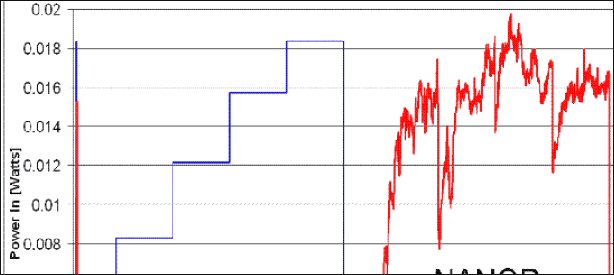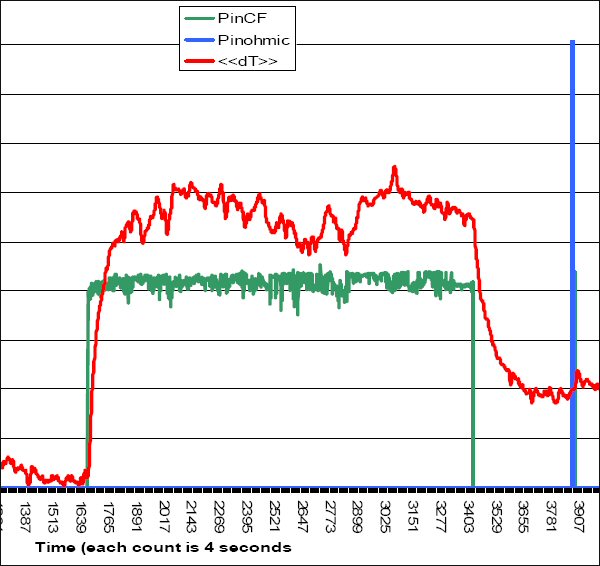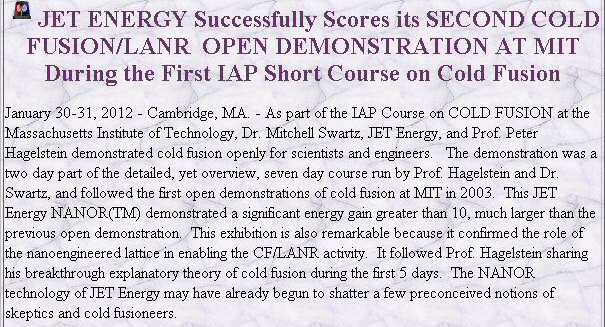Swartz Responds to Our Reports About His Claims
Click Here for the Summary Report/Conclusion
Mitchell Swartz, a longtime low-energy nuclear reaction researcher, has complained about three minor details in recent articles in New Energy Times about his claims.
Swartz’s Feb. 5 complaints appeared on his Web site, “Cold Fusion Times.” He was responding to articles we published on Feb. 3 and on Feb. 4.
In addition to being a LENR researcher, Swartz claims that he is also a LENR journalist and that his Web site is a journal, periodical and newsletter that covers the field of “cold fusion.”
Our articles were about a “significant energy gain” that Swartz publicized about his own work earlier in the week. His news spread across the Internet.
First, we stated that his “significant energy gain” was 18 milliwatts when, in fact, it was 80 milliwatts.
Second, we stated that his “significant energy gain” was by a factor of 10 when, in fact, it was, according to Swartz, “just above about 14.”
Third, we stated that his “significant energy gain” lasted for only three minutes when, in fact, according to Swartz, “it actually performed for that part of its weeklong performance for circa 4 x (3,592-2,053) seconds!!!”
When Swartz first publicized his claim, he failed to disclose to his readers that his “significant energy gain” was a mere 80 milliwatts and that it lasted for “4 x (3,592-2,053) seconds.”
In the past year, the publicity in the field has been dominated by Andrea Rossi’s dubious claims of excess-heat output on the order of a megawatt. Swartz has been one of Rossi’s biggest supporters. Swartz’s excess heat output, however, was 10 million times less, but he didn’t disclose that on Feb. 3.
In his response, Swartz did not mention anything about why he failed to disclose the magnitude or duration of his “significant energy gain.”
Even though Swartz’s complaints are about minor details, we do pride ourselves on getting the facts straight and the data accurate.
Swartz had not published any data or reports until Feb. 5. Normally, scientists publicize their claims along with or after publishing their data and scientific evidence. Swartz did not do this. We e-mailed Swartz on Feb. 3 to learn more about his experiment and his results. He did not respond. This made it difficult to understand his results and to confirm the facts.
A LENR researcher contacted us on Feb. 4 and advised us about the 18-milliwatt error. We published that correction immediately.
Only after Swartz published his data on Feb. 5 did we realize why the first researcher had difficulty understanding Swartz’s slide and mistook 18 for 80. Take a look at the detail from Swartz’s slide #2 of his Jan. 30 experiment below.
The y-axis label says “Power In [Watts],” and the red curve reaches just beyond 0.018. It would have been better if Swartz labeled this as “Power Input in Watts” or even “Power Input [Watts].” Because of Swartz’s poor labeling, the researcher thought he was looking at the excess-heat power, in Watts, rather than input power, in Watts.

The second researcher thought that the duration of the excess heat lasted three minutes, and we reported this. As Swartz has written in his response, the duration of the “significant energy gain” was “4 x (3,592-2,053) seconds.” Apparently, the second researcher had difficulty understanding Swartz’s timescale. Here is a snapshot:

Swartz wrote that we made a mistake by writing that he had an energy gain of 10. The mistake is his. We obtained the value of “10” from his Web site on Feb. 3.
As he stated on Feb. 5, Swartz elected to release his data and charts on his Web site only after we published our news stories.


